Have you ever wondered how to teach nothing?
I’m not talking about taking a break from formal teaching over the summer – although maybe you’re doing that, too! I’m talking about the number zero. The concept of zero can be a struggle for small children to understand. How much is zero, really?
Think about it. Zero isn’t a quantity, but the opposite of quantity. That’s pretty abstract, and it can be hard to model in a hands-on way. Many children use and understand the numerals 1 to 9 before they understand 0. Oh, they might know that the numeral 0 means zero. But what does zero really mean?
You can help your child understand zero by building it into your day. Zero is fun to play with! It’s the number that elicits the most giggles. Ask your child to jump twice, then once, and then zero times. Suggest to him that maybe today he should have zero cookies for dessert. Ask him how many snowflakes he sees in the sky today. “None? You mean, there are zero snowflakes?!”
And….play this game! The Zero Game, game N32 in the Math Card Games book, is a great way to practice the concept that zero means nothing. It’s also a great character builder, because the child who gets zero has to exert some self-control – which can be difficult for small children!
This game is more fun if you’ve got a bunch of people – 4 to 11 players is ideal – so if you don’t have 11 children, then consider saving it for family game night or homeschool co-op. There’s also an easy way to modify for a single child, though – so if that interests you, then hang tight through this post and I’ll explain how at the end.
To prepare the game, collect a different basic number card for each player, making sure to include a 0. I have 4 children and I’m going to play too, which means I need 5 cards. These are the cards I chose…
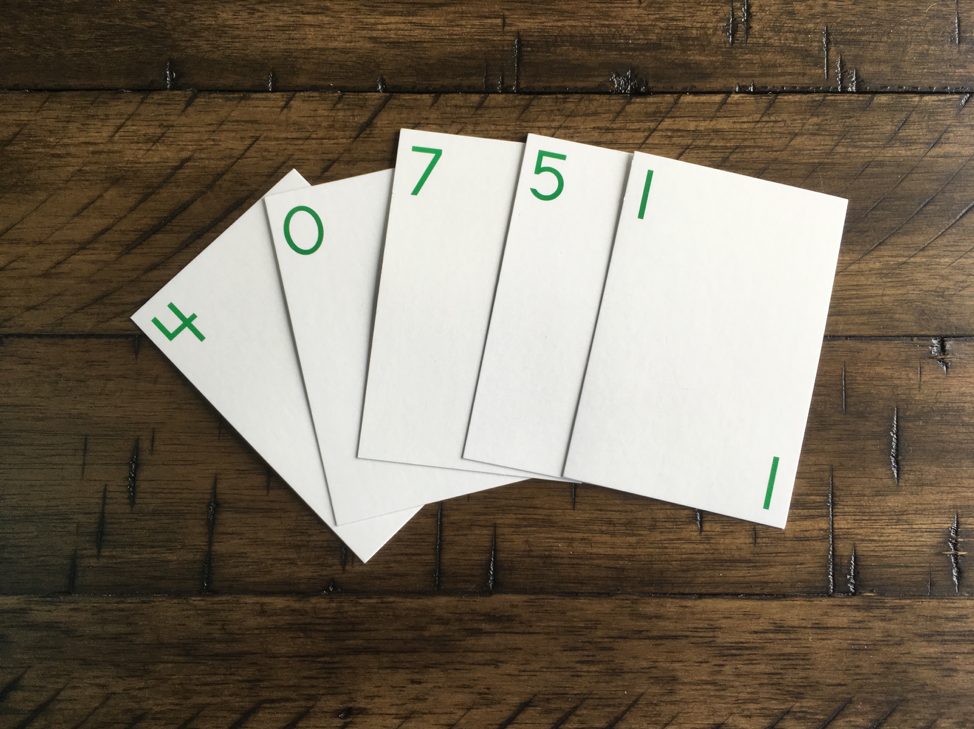
Next, find a little basket or container and gather the same number of small objects as the sum of the numbers on the cards you’ve chosen. That means for me, I need 17 objects, because 4 + 0 + 7 + 5 + 1 = 17.
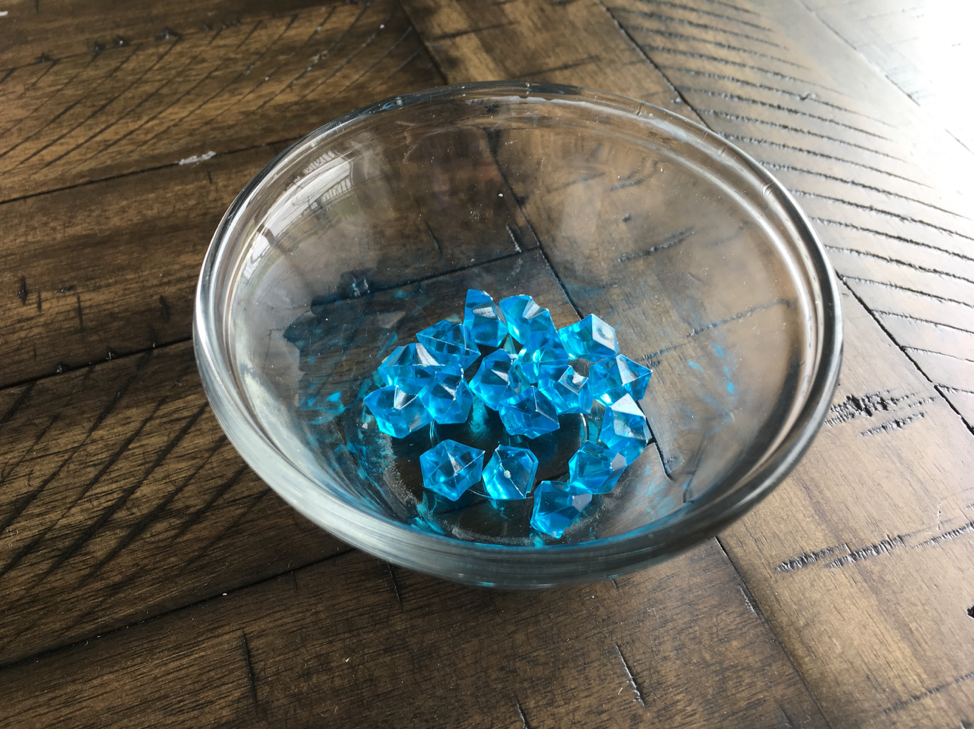
I chose to use tiny blue jewels, but you could use centimeter cubes, pony beads, beans, popcorn kernels, little Lego pieces, or even small candies. Whatever you pick, they should be small enough to be hidden in a fist.
Now we’re ready to play. Place the number cards face down on your playing surface. Place the basket with your small objects at a distance away – the other side of the room, maybe, or in the next room. We put ours on the deck just outside the living room where we were playing.
Gather your group around the cards, and let everyone take a turn choosing a card and peeking at it. Make sure your players know that they can’t show their card to anyone else!
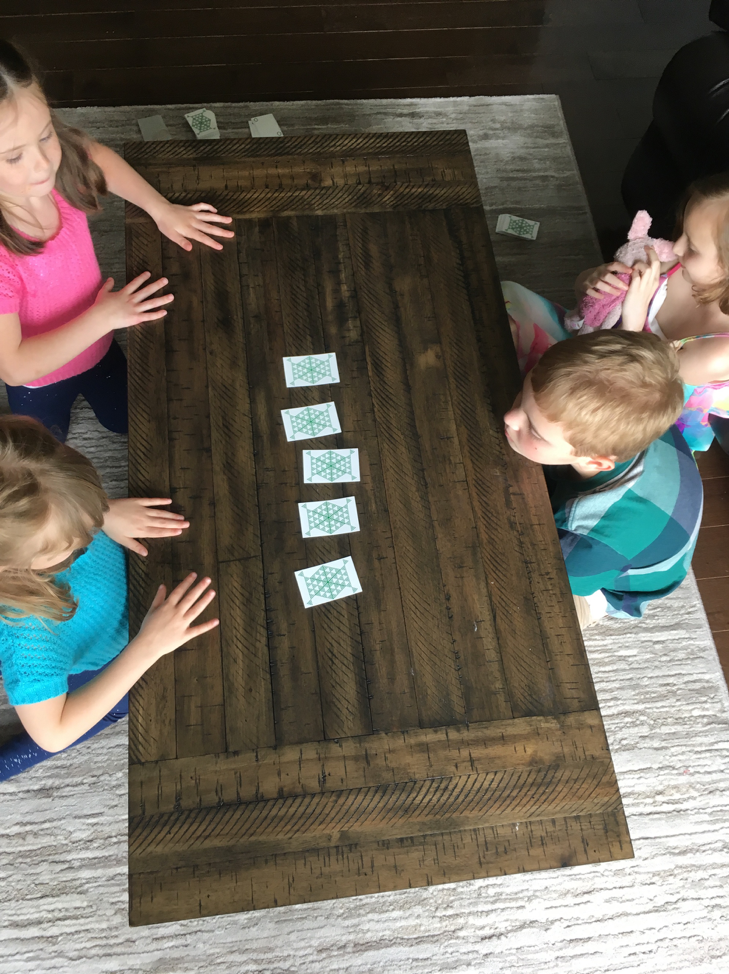
Now, one by one, send your players off to the basket of objects. Each child must take out of the basket the number of objects that his card specifies. He puts them in his hand and closes up his fingers, so that he returns to the group with a fist and a mystery number of objects inside.
Mary’s the youngest, so we let her go first. She got the 4, so she’s slipped outside and is secretly counting out four jewels.
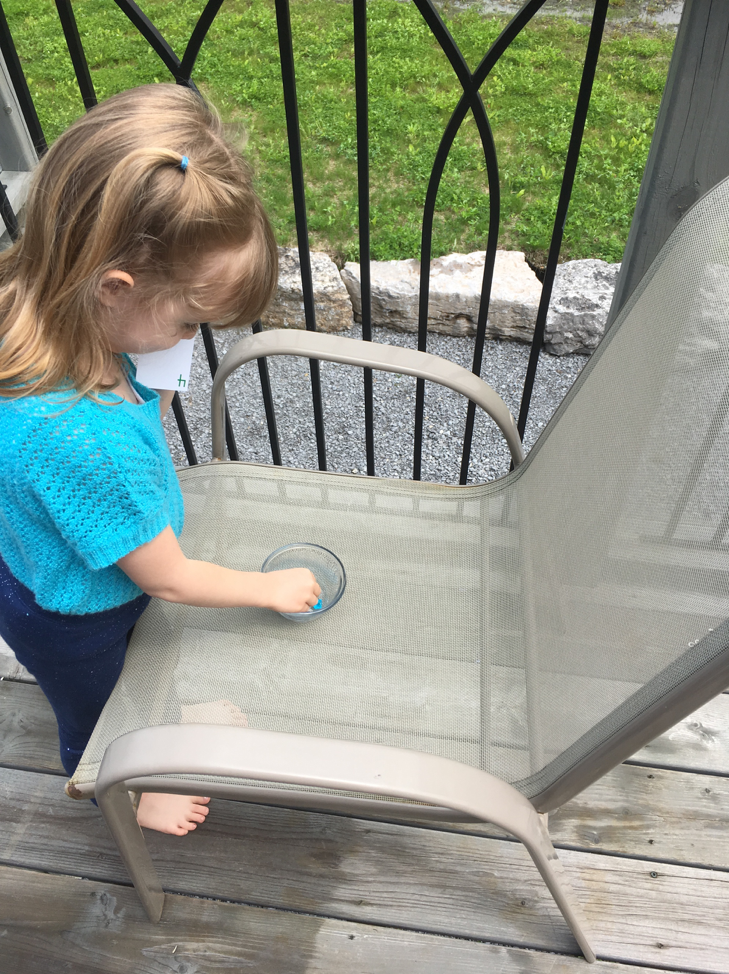
The player who has the zero, of course, will return with nothing in her hand. But she should still return with a fist and an inscrutable grin.
…or as inscrutable as a 4-year old can pull off.
When everyone has visited the basket, it’s time for the big reveal! Three, two, one – and everyone turn over your cards and open up your hands.
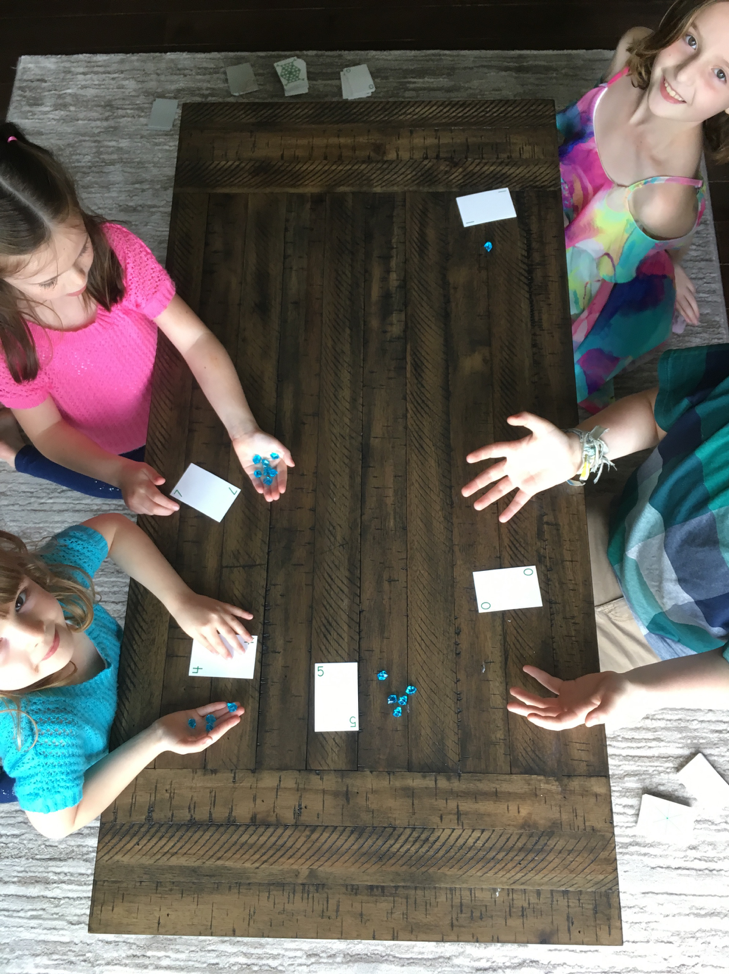
We usually play several rounds of this because everyone is hoping for a turn to be the “zero”!
And now – I promised you a way to play with just a single child. You can set up the game in the same way you did with multiple children, laying out about 5 number cards, or even all 11 if you’re feeling ambitious and your child has the focus for it. Have your child choose any card and turn it over, then walk to the object basket, withdraw that number of objects that her card specifies, and bring them back to you. Then she can turn over the next card and do it again – until she’s gone through all of them. If she’s done it correctly, she should collect all the objects. The key is to include the zero in there, so that when she turns over the zero, she takes out zero objects.
Another fun variation is to leave out the object basket altogether, and simply have your child jump or clap her hands according to the number she turns over. Of course, when she turns over the zero, she’ll have to jump or clap zero times!
One more thing. It’s important that your child knows that only when zero is by itself does it mean none. Of course, when zero shows up in a number like 10 or 304, it’s being used as a “placeholder” to show that there are no ones, or tens, or whatever in those numbers.
But that’s a topic for another blog post. Until then: enjoy teaching nothing this summer!
